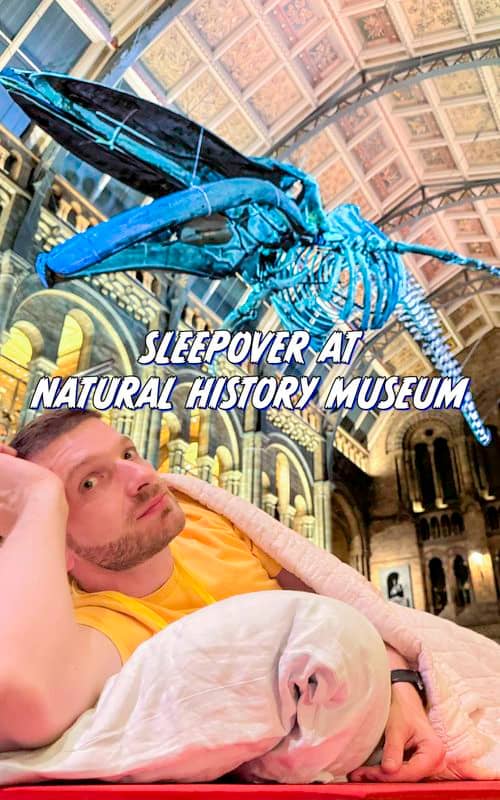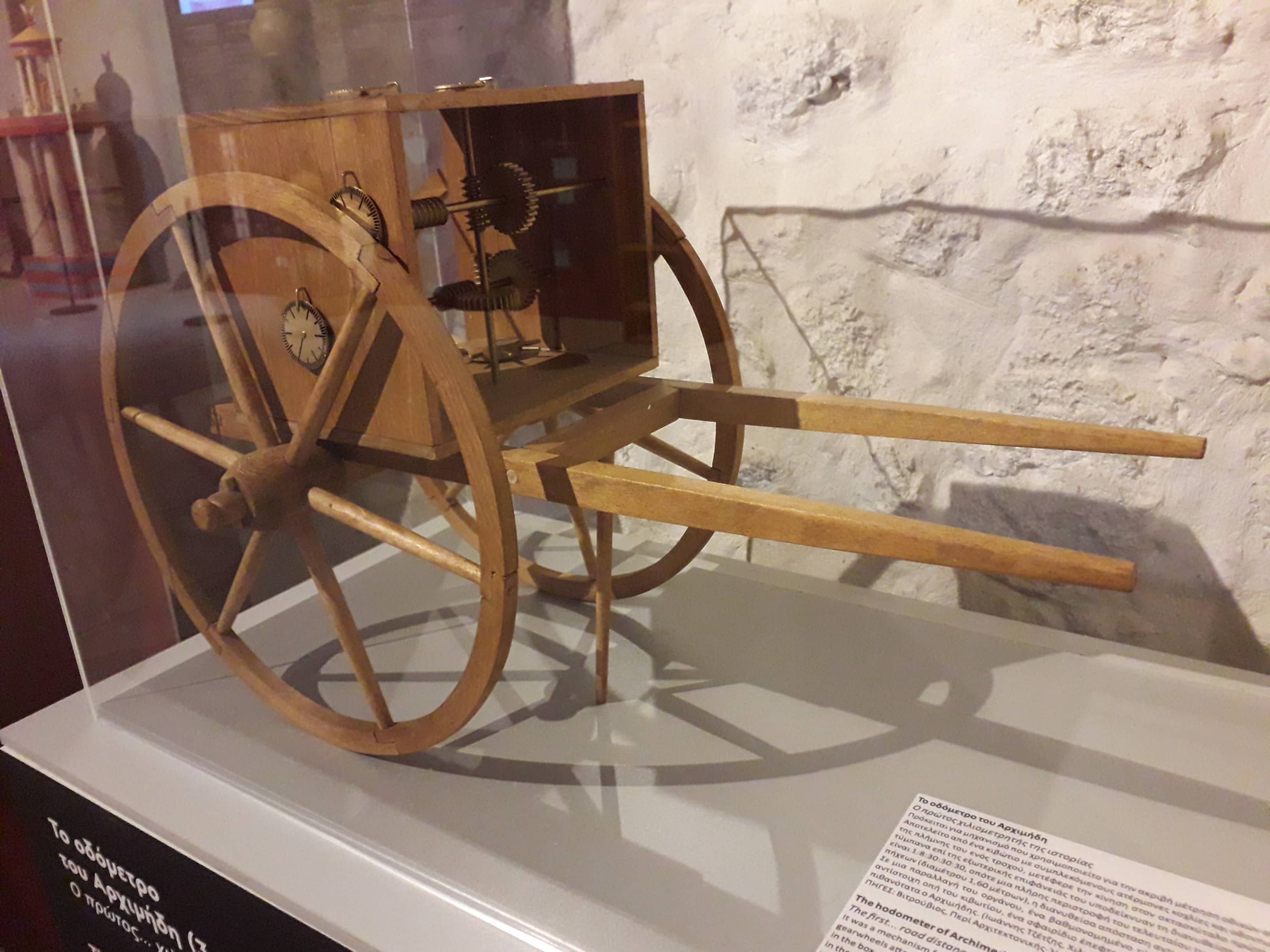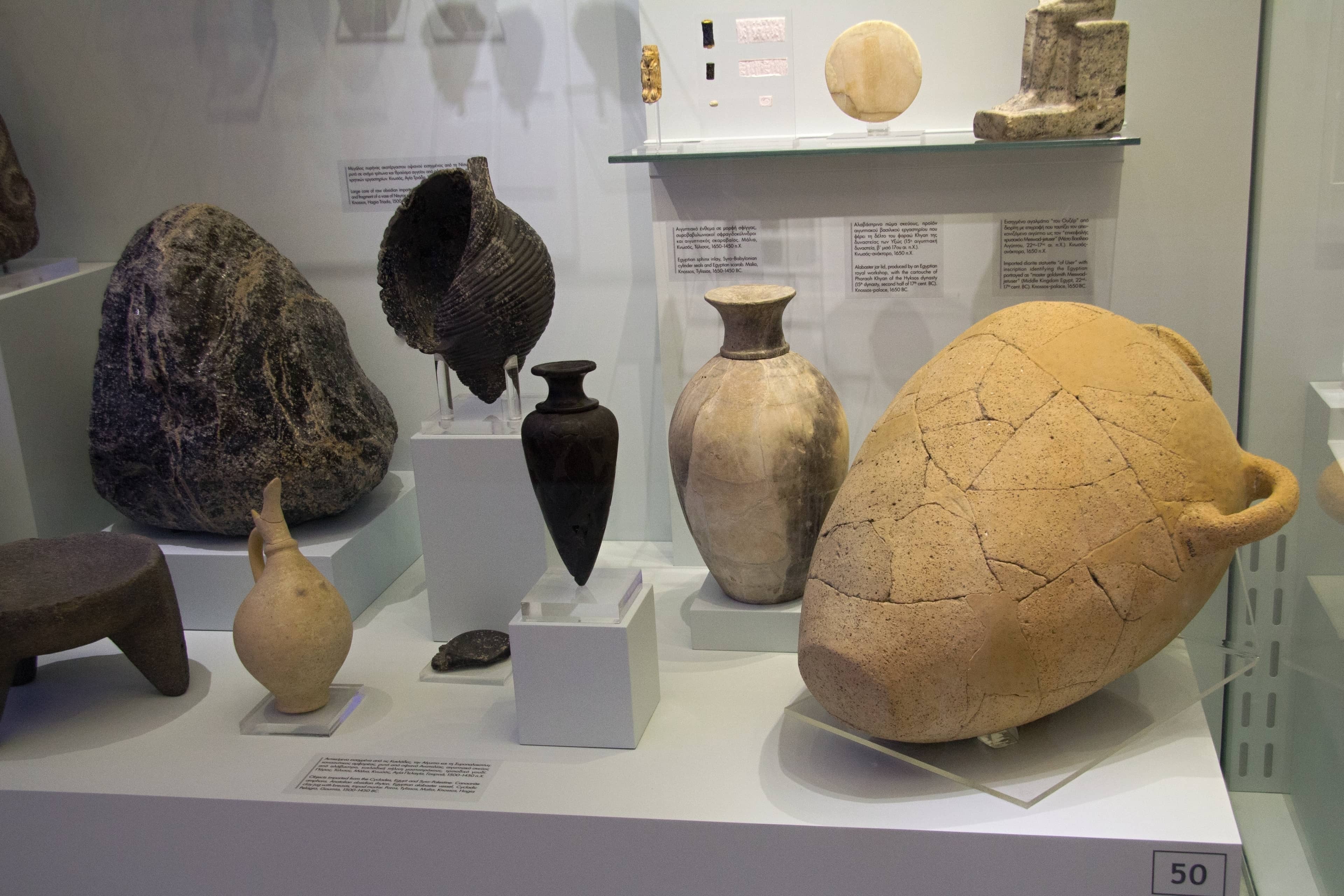
Natural History Museum of Crete
Discover Crete's unique natural history, from ancient fossils to diverse ecosystems, with interactive exhibits and a special kids' discovery center.

Highlights
Must-see attractions

Social
From TikTok & Reddit
Best Time
Fewer crowds, better experience

Natural History Museum of Crete
Best Time
Fewer crowds, better experience

Highlights
Must-see attractions
Discover Crete's unique natural history, from ancient fossils to diverse ecosystems, with interactive exhibits and a special kids' discovery center.
"Interesting museum for nature lovers, though live animal conditions and simulator availability are points of concern."

Free Lockers Available
Utilize the complimentary lockers upon entry to store your belongings. :key:
Check Simulator Status
The earthquake simulator is a highlight but may not always be operational. :warning:

Highlights
Discover the most iconic attractions and experiences

Crete's Natural Wonders
Explore diverse flora, fauna, and geological formations unique to Crete and the Mediterranean region.

Earthquake Simulator
Experience a simulated earthquake to understand seismic activity in the region. (Check availability before visiting).

Discovery Centre
An engaging space designed for children and school groups to learn about nature interactively.
Plans like a pro.
Thinks like you
Planning Your Visit
Timing Your Visit
Understanding the Exhibits
Best Times
Insider Tips
from TikTok, Instagram & Reddit
Free Lockers Available
Utilize the complimentary lockers upon entry to store your belongings. :key:
Check Simulator Status
The earthquake simulator is a highlight but may not always be operational. :warning:
English Translations
All exhibits are translated into English for international visitors. :flag_gb:
Consider Special Events
Look out for events like 'Nuit Blanche' for a unique museum experience. :sparkler:
Interesting excursion ideas around Heraklion
Tips
from all over the internet
Free Lockers Available
Utilize the complimentary lockers upon entry to store your belongings. :key:
Check Simulator Status
The earthquake simulator is a highlight but may not always be operational. :warning:
English Translations
All exhibits are translated into English for international visitors. :flag_gb:
Consider Special Events
Look out for events like 'Nuit Blanche' for a unique museum experience. :sparkler:
What Travellers Say
Reviews Summary
Visitors find the Natural History Museum of Crete an interesting place to learn about the island's nature, with a good discovery center for kids and a unique building. However, some express concern over the welfare of live animals and note that key attractions like the earthquake simulator are not always functional.
"Interesting museum if you want to learn about the nature of Crete and the Mediterranean, however the main exhibits have not changed in as long as it has existed.
It is located in a unique building of Heraklion which used to be a factory. It is right on the seaside but it unfortunately has no accesible viewpoints or balconies.
I think it is worth visiting at least once though."
johnkop4
"The museum is interesting for sure, but the live animals that are kept there are sadly in bad and unhealthy conditions. Enclosures seem dirty and the water they have is dirty too with algae growing in the drinking water and it just seems sad overall. I can not understand why live animals are treated like this especially in a place that has "museum" and "university" on the building.
Take care of your animals."
Jesse Kruijthof
"The only reason this museum has 4 stars instead of 5 is because it's still undergoing renovations! Do not let this put you off though!
Any nature lover visiting Crete should come to this museum. Everything is translated into English and it is jam-packed full of information and wonders to explore and look at!
As you enter there is a long row of lockers that are free to use so you dont have to carry your bags around with you (I really appreciated this). The museum is set out over numerous floors, so there are quite alot of stairs in the building but there are also lifts available.
The discovery centre part of the museum I imagine is pretty useful for kids and school education groups.
I imagine that once the renovations are complete this museum really will be in good condition.
I thoroughly enjoyed all the specimens on display and the different modes of information being displayed (films, interactive panels, information panels etc)."
Hannah's Adventures in Nature
What People Like
What People Dislike
Frequently Asked Questions
🚇 🗺️ Getting There
The Natural History Museum of Crete is located in Heraklion, the capital of Crete. It's accessible by public transport within the city. Many visitors find it convenient to walk from the city center or take a local bus. If you're arriving by ferry or plane, taxis are readily available to take you directly to the museum.
Parking in Heraklion can be challenging. While there might be some street parking, it's often limited. It's advisable to check for paid parking lots in the vicinity or consider using public transportation to reach the museum.
Yes, if you are staying in other towns on Crete, you can take intercity buses (KTEL) to Heraklion. From the Heraklion bus station, you can then take a local bus or a taxi to the museum.
🎫 🎫 Tickets & Entry
Opening hours can vary, so it's best to check the official website or contact the museum directly before your visit. Generally, it's open during daytime hours on weekdays and Saturdays.
Admission fees are typically reasonable. While specific prices can change, it's generally considered an affordable attraction. Check their official website for the most up-to-date ticket prices.
For regular visits, booking in advance is usually not necessary, especially during off-peak times. However, for special events or during peak tourist season, it might be a good idea to check if advance booking is recommended.
Discounts may be available for students, children, or seniors. It's always a good idea to inquire at the ticket counter or check the museum's website for any applicable discount policies.
The museum has multiple floors and while there are lifts available, some areas might have stairs. It's recommended to contact the museum in advance to confirm accessibility details if you have specific needs.
🎫 🧭 Onsite Experience
The museum showcases the natural history of Crete and the Mediterranean, including diverse flora, fauna, fossils, and geological exhibits. There's also a discovery center for children and an earthquake simulator.
Yes, the museum has a dedicated discovery center with interactive activities that are great for children. The exhibits on animals and nature can also be engaging for younger visitors.
Most visitors spend around 1.5 to 2 hours exploring the exhibits. If you plan to spend more time in the discovery center or fully engage with all the interactive displays, you might need a bit longer.
Information on guided tours is not widely advertised. However, the exhibits are well-labeled in English, and the interactive displays provide a lot of information.
Generally, photography for personal use is allowed, but flash photography might be restricted to protect the exhibits. It's best to look for signage or ask museum staff if you're unsure.
🍽️ 🍽️ Food & Dining
The museum itself does not typically have a full-service restaurant. However, there are usually vending machines for snacks and drinks. You'll find plenty of cafes and tavernas in the surrounding Heraklion area.
It's generally recommended not to consume outside food and drinks inside the museum galleries to protect the exhibits. There might be designated areas for eating if available.
The museum is located in Heraklion, which offers a wide array of dining options. You can find traditional Greek tavernas, cafes, and restaurants serving local and international cuisine within walking distance.
📸 📸 Photography
While the interior exhibits offer educational visuals, the building itself, a former factory, has a unique architectural character. The surrounding seaside location also provides scenic views, though direct viewpoints from the museum are limited.
Flash photography is often prohibited in museums to prevent damage to artifacts and exhibits. Always check for signs or ask staff before using your flash.
Photography of the live animals is usually permitted, but it's important to be respectful and avoid disturbing them. Be mindful of any specific rules posted regarding animal enclosures.
For Different Travelers
Tailored advice for your travel style
👨👩👧 Families with Kids
Practical tips for families include utilizing the free lockers to keep hands free for little ones and checking if the earthquake simulator is operational, as this is often a highlight for kids. While the museum has stairs, lifts are available, making it manageable for strollers. Remember to check opening hours and consider visiting during quieter times to ensure a more relaxed experience for everyone.
📚 Educational Travelers
Travelers interested in specific aspects of natural history, such as endemic species or seismic activity, will find dedicated sections. The museum's former life as a factory also adds a layer of historical context to the visit. Consider dedicating ample time to explore the displays thoroughly and take advantage of any interactive elements that enhance the learning experience.
Deep Dives
In-depth insights and expert knowledge
Exploring Crete's Biodiversity
Beyond static displays, the museum aims to be engaging. The discovery center is particularly noteworthy, providing interactive learning experiences tailored for younger visitors and school groups. This hands-on approach makes complex scientific concepts more accessible and enjoyable for children. While some visitors note that the main exhibits haven't changed significantly over the years, the depth of information and the quality of the displays still make it a worthwhile visit for nature enthusiasts.
It's important to note that some reviews mention concerns about the conditions of live animals housed at the museum. Visitors have reported enclosures appearing dirty and water quality issues. This is a sensitive aspect, and while the museum aims to educate, ensuring the welfare of its live exhibits is crucial for its reputation and educational mission.
The Earthquake Simulator Experience
However, it's crucial to manage expectations regarding the simulator. Several visitor reviews indicate that the earthquake simulator was not operational during their visits. This can be a point of disappointment, especially for those who specifically planned their visit around this attraction. It's highly recommended to confirm its availability with the museum directly before your trip to avoid any potential letdown.
A Unique Building with a Seaside Location
Despite its prime location, visitors have noted that the museum unfortunately lacks accessible viewpoints or balconies that directly overlook the sea. While you are near the water, the design of the building doesn't fully capitalize on its coastal setting for visitor enjoyment or photography. Nevertheless, the building's historical significance and its proximity to the sea contribute to the overall atmosphere of the museum.




Social
from TikTok, Instagram & Reddit